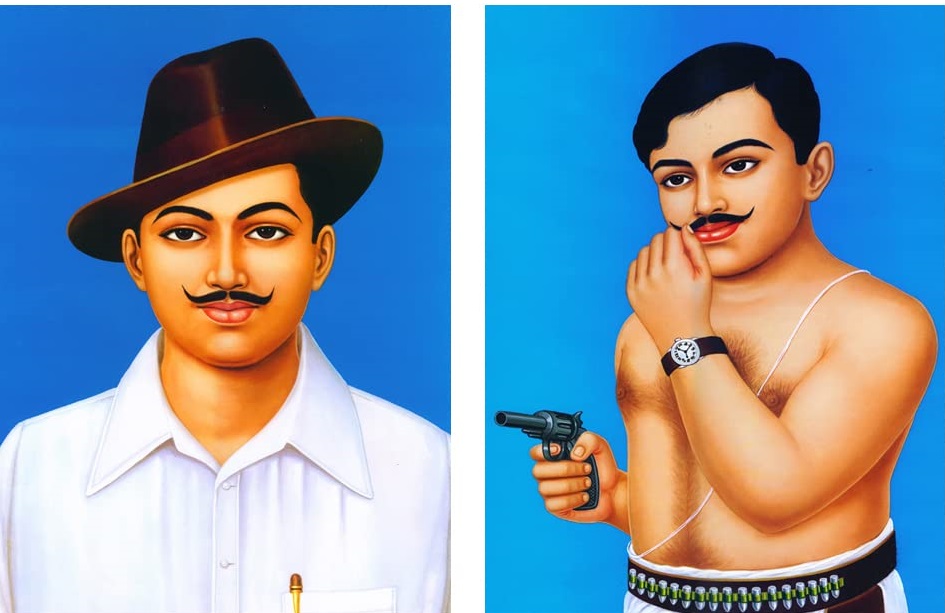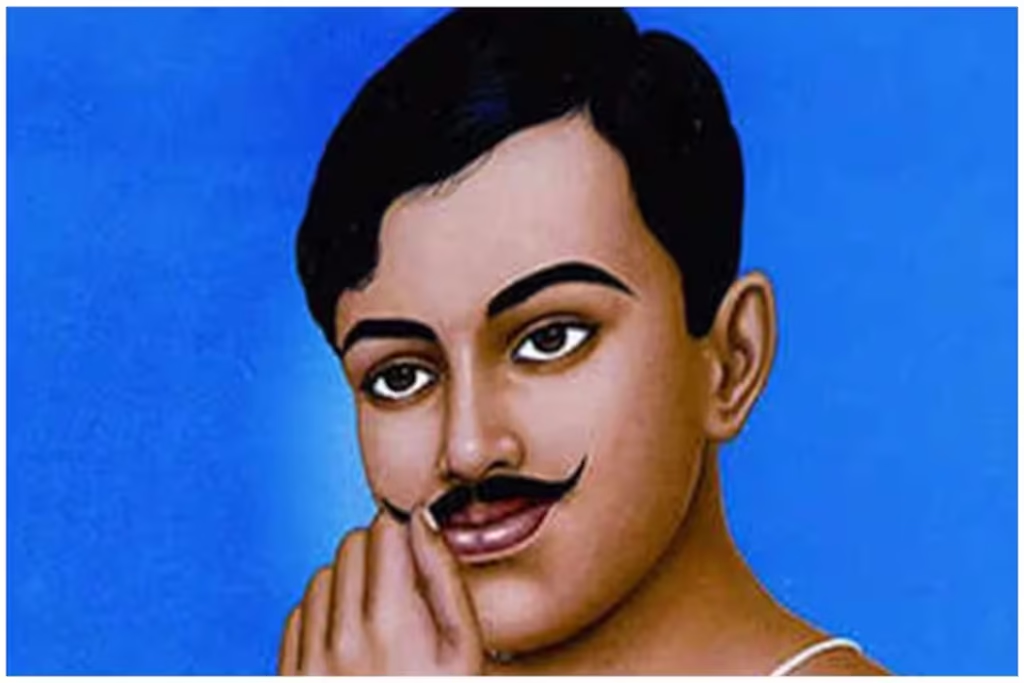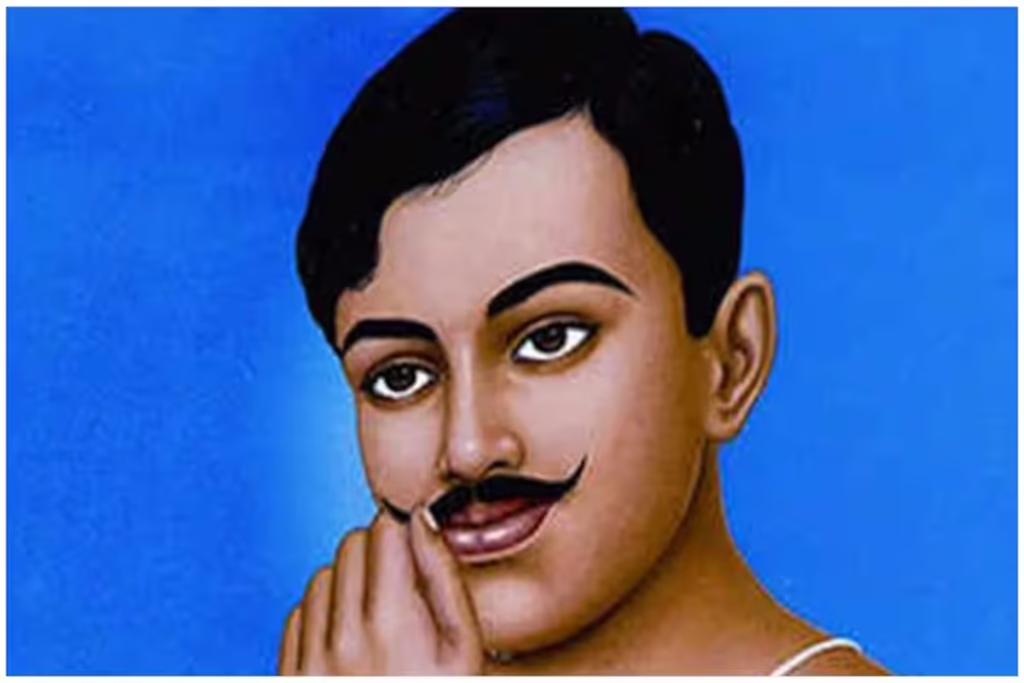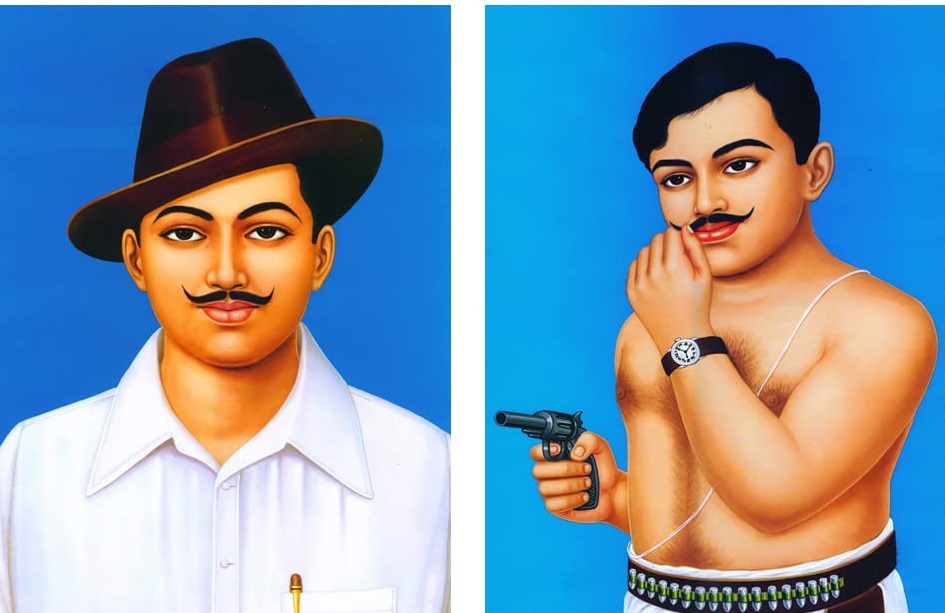
Chandra Shekhar Azad and Bhagat Singh were two of the most influential revolutionaries in India’s freedom struggle. Their association within the Hindustan Socialist Republican Association (HSRA) helped shape the course of armed resistance against British rule. While Bhagat Singh was the ideological visionary, Azad was the military strategist and fighter. Together, they inspired countless young revolutionaries.
🔹 First Meeting and Formation of HSRA
- Azad and Bhagat Singh first met in 1927, when Bhagat Singh joined the Hindustan Republican Association (HRA).
- After the Kakori Train Robbery (1925) and the execution of Ram Prasad Bismil and Ashfaqulla Khan in 1927, the revolutionaries needed new leadership.
- In 1928, Azad, Bhagat Singh, Rajguru, and Sukhdev reorganized the group as Hindustan Socialist Republican Association (HSRA), adding socialist ideals to their fight for independence.
🔹 Key Revolutionary Activities Together
1. Planning the Killing of J.P. Saunders (1928)
- Background: Lala Lajpat Rai was brutally lathi-charged by British police officer James A. Scott during a protest against the Simon Commission. He succumbed to his injuries.
- Revenge Plan: HSRA members, led by Bhagat Singh and Azad, planned to assassinate James Scott in Lahore.
- Execution: On December 17, 1928, Bhagat Singh and Rajguru mistakenly shot J.P. Saunders instead of Scott.
- Azad’s Role: Azad provided cover fire, allowing Bhagat Singh and Rajguru to escape safely.
2. Assembly Bombing Case (1929)
- Objective: Bhagat Singh and Batukeshwar Dutt threw non-lethal bombs in the Central Legislative Assembly, Delhi, on April 8, 1929, to protest against oppressive laws.
- Azad’s Role: Though not directly involved, Azad was the mastermind behind their escape plan, but Bhagat Singh and Dutt surrendered voluntarily to use the trial as a platform for revolutionary propaganda.
3. Attempt to Free Bhagat Singh from Jail (1930-1931)
- After Bhagat Singh’s arrest, Azad made multiple plans to rescue him from jail.
- However, due to heavy British security and betrayals, the rescue attempts failed.
- Despite efforts, Bhagat Singh, Sukhdev, and Rajguru were hanged on March 23, 1931.
🔹 The Martyrdom of Azad (1931)
- Just a month before Bhagat Singh’s execution, Azad was betrayed by an informant.
- On February 27, 1931, he was surrounded by British forces in Alfred Park, Allahabad.
- He fought bravely, killing several British officers before using his last bullet to shoot himself, keeping his vow to never be captured alive.
🔹 Legacy of Their Bond
- Azad and Bhagat Singh’s friendship and revolutionary vision continue to inspire India.
- Both are remembered as symbols of courage, sacrifice, and patriotism.
- Alfred Park (now Chandra Shekhar Azad Park) and Hussainiwala (where Bhagat Singh’s last rites were performed) stand as memorials to their legacy.
Their partnership played a pivotal role in India’s freedom struggle, proving that the fire of revolution could never be extinguished. 🚩




